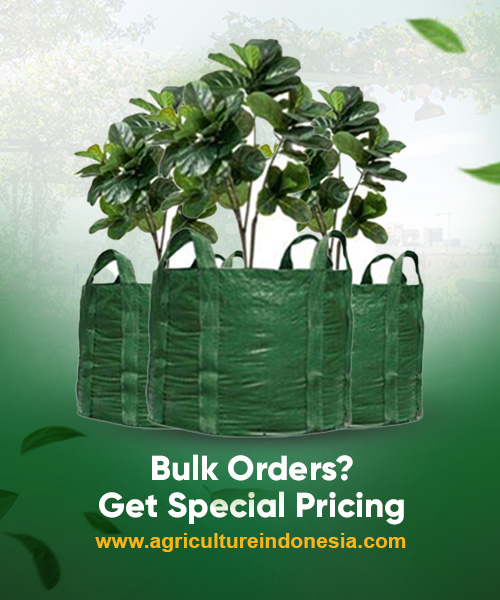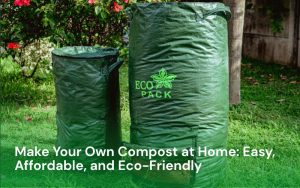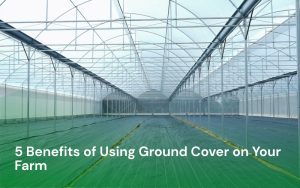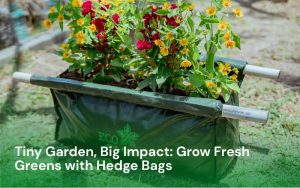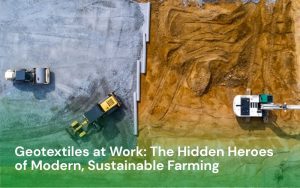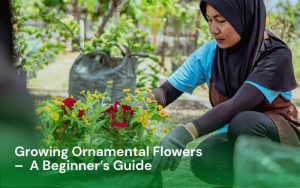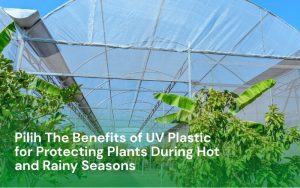Farming in Limited Spaces — You no longer need a large plot of land to grow your own food. Even a small balcony can be transformed into a thriving vegetable garden. While many still believe that farming requires wide-open fields, the truth is: small-space farming has become a smart, sustainable solution—especially for urban dwellers seeking a healthier lifestyle, food independence, and eco-friendly living. More and more people are turning to flexible farming methods, one of the most popular being the use of planter bags. These bags offer a smart and practical solution for home gardeners and hobbyists who want to stay productive—even with minimal space.
Why Planter Bags Are Perfect for Limited Space Gardening
A planter bag is a grow container in the shape of a bag, made from durable HDPE material. Specifically designed for gardening, planter bags allow plant roots to grow optimally by promoting better air circulation and enabling excess water to drain easily helping prevent root rot.
Some of the key advantages of planter bags include:
- Practical and flexible: Easily moved to adjust to sunlight needs
- Eco friendly: Reusable and long lasting
- Available in various sizes: Ranging from 3 liters to 200 liters to suit different plant types
Best Plants to Grow in Planter Bags
Planter bags can be used for a wide variety of plants, from vegetables to fruits. Here are some popular crops that grow well in planter bags:
- Leafy vegetables: spinach, water spinach, lettuce, mustard greens, scallions
- Small fruiting plants: chili peppers, tomatoes, eggplants, strawberries
- Root and tuber crops: potatoes, carrots, cassava (requires larger bags)
- Spices and herbs: ginger, turmeric, lemongrass, basil, mint
For the best results in limited-space farming, be sure to match the planter bag size with the type of plant. For example, tomatoes and chili peppers should be grown in planter bags of at least 20 liters to allow optimal root development.
How to Plant and Care for Crops in Planter Bags
1. Choose the right planter bag size for each plant
The first step is selecting the appropriate planter bag size. Smaller plants like spinach, water spinach, or lettuce grow well in 5–10 liter bags. In contrast, larger fruiting plants such as tomatoes, chili peppers, or eggplants require more root space and should be grown in bags of at least 20 liters. For root crops like potatoes or cassava, choose bags of 50 liters or more to allow optimal root development.
2. Prepare nutrient rich, well aerated growing media
A healthy growing medium is essential for optimal plant development. Use a mixture of garden soil, compost or manure, and raw rice husks or rice husk charcoal in a ratio of 5:3:2. This blend supplies sufficient nutrients, retains moisture, and provides good aeration to prevent root rot.
3. Fill the planter bag, leaving space at the top
Fill the planter bag with the growing medium until about ¾ of its height. Avoid overfilling. Leaving 5–10 cm of space at the top helps make watering easier and prevents overflow during heavy rain or overwatering.
4. Plant seeds or seedlings as needed
Create planting holes in the soil, about 2–5 cm deep depending on the plant type. Insert the seeds or seedlings, then gently cover with soil. Water slowly to help the soil settle around the roots and maintain moisture.
5. Place the planter bag in a spot with adequate sunlight
Sunlight is essential for plant growth. Make sure the planter bag is placed where it receives at least 4–6 hours of direct sunlight each day. If the area lacks light, you can move the planter bag regularly to catch the sun.
6. Perform regular maintenance
Plants require daily care. Water them regularly morning and evening, especially during hot weather. Apply additional fertilizer every 2–3 weeks, either as liquid organic fertilizer or granules. Prune the plants when they become too dense to improve air circulation. Also, watch out for pests and use natural pesticides when necessary.
7. Harvest according to the plant’s growth cycle
Each plant has its own harvesting timeline. Leafy vegetables like spinach and water spinach are typically ready to harvest within 3–4 weeks. Fruiting plants such as tomatoes and chili peppers take around 2–3 months, while root crops like potatoes can be harvested after 3–4 months. Harvesting gradually helps maintain plant productivity over time.
Planter Bag Eco Pack – The Smart Solution for Small-Space Farming
With planter bags, limited space is no longer a barrier to growing your own food. From backyard corners to apartment balconies, you can grow fresh vegetables, herbs, and even fruits with satisfying results. They’re practical, easy to maintain, and suitable for everyone from beginners to seasoned gardeners. For the best outcome, be sure to use planter bags that are durable, long-lasting, and eco-friendly.
The Planter Bag Eco Pack by Agriculture Indonesia is your ideal partner for small-scale farming. Available in various sizes, made from high-quality materials, and specially designed to support optimal plant growth. Visit our planter bag product catalog and find the perfect fit for your garden today!


